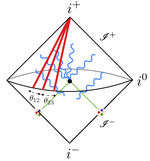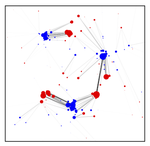PhD Candidate in Physics
Center for Theoretical Physics
Massachusetts Institute of Technology
About Me
I am a PhD candidate in the Center for Theoretical Physics at MIT. I am interested in using the tools of quantum field theory and machine learning to study fundamental particle physics.
Much of my research focuses on physics relevant at the Large Hadron Collider, including jet physics, QCD, and new physics searches. My collaborators and I have developed several novel tools and algorithms for use at the LHC, some of which are highlighted on this page.
Interests
-
Particle Physics
- Quantum Field Theory
- Collider Physics
- Jets and QCD
-
Data Science
- Machine Learning
- Optimal Transport
-
Algorithms/Software
Education
-
PhD Candidate in Physics, 2016-
Massachusetts Institute of Technology
Advisor: Jesse Thaler -
AM in Physics, 2016
Harvard University
-
AB in Physics and Mathematics, 2016
Harvard University
summa cum laude, Highest Honors
Seconday field in computer science



